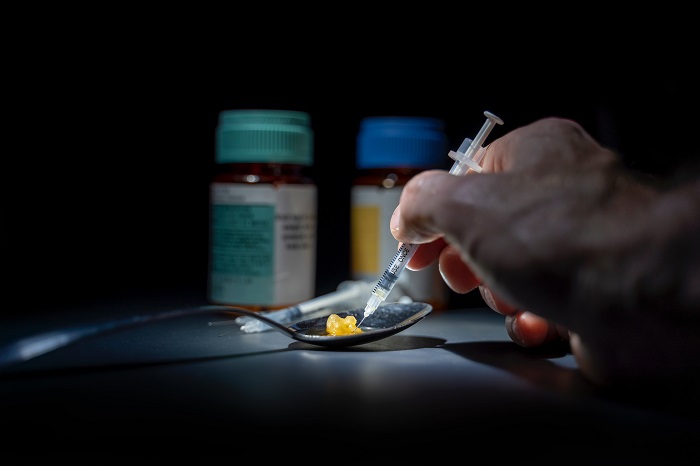The federal law considers a Schedule 1 drug the one that comes with a high potential for addiction and abuse. It’s also a substance that doesn’t have an acceptable safety level to use under medical supervision or accepted medical treatment in the United States at all. Finally, you can’t get a prescription for these drugs.
In this article, we are focusing on discussing the list of Schedule 1 drugs and related Californian law implications. Here is what you should know about using these substances and potential penalties in California!
What Are Drug Classifications?
These are federal drug classifications, which relevant experts designed after serious consideration. Here is the overview of the categories:
- Schedule 1 substances. We’ll focus on Class 1 drugs in this guide. It’s vital to mention that marijuana has a special status in California, although it belongs in this group.
- Schedule 2 drugs. Morphine, cocaine, and methadone are in this category. They have a high addiction risk but come with accepted medical use with certain restrictions.
- Schedule 3 drugs. Codeine, anabolic steroids, and barbiturates are in this class. The US federal law approves medical use, but it can lead to high psychological and moderate physical dependence.
- Schedule 4 drugs. Xanax and Valium are the most famous examples of these substances, which can lead to limited dependence.
- Schedule 5 drugs. This class has the lowest risk of abuse or addiction, such as a cough medicine that contains some codeine.

What Is a List of Schedule 1 Drugs?
We already answered the question, “what is a Schedule 1 drug?” These substances come with a high risk of abuse and addiction. Here is a detailed overview of the drugs in this class.
Heroin
This powder is a highly addictive drug coming from the opium poppy plant. It’s a couple of times more powerful than morphine. You can snort, smoke, or inject it for potential pain relief and a euphoric feeling. Unfortunately, the abusers often aren’t aware of the drug’s actual power, which might be the reason behind overdose cases.
LSD
Lysergic acid diethylamide is a full name that most users probably aren’t familiar with at all. It’s a synthetic hallucinogen, which often alters our minds in positive or negative ways. LSD affects your ability to make rational decisions, and you can experience flashbacks or anxiety after using it.
Marijuana
The answer to the question “is marijuana a Schedule 1 drug,” is yes. It’s because you have a high risk of getting addicted. However, Californian law approves cannabis products for both medical and recreational use. There are certain limitations, which are also mentioned in the federal law. For example, the federal regulations mention that cannabis products with a THC quantity of up to 0.3% are legal.
Mescaline
The other name is peyote, and this is another hallucinogen. Unlike LSD that comes from a fungus, this one is derived from a cactus plant. Visual hallucinations and euphoria are what the users experience after taking it. The side effects are vast and include psychosis, tremors, anxiety, and tachycardia.
MDMA or Ecstasy
MDMA is another synthetic drug with psychoactive properties. It’s a hallucinogen that comes with many side effects, especially with consistent use. That includes depression, losing focus, fatigue, etc. High doses of MDMA can lead to hyperthermia, which could cause organ failure.
GHB
This is an abbreviation for Gamma-Hydroxybutyrate, which you might also know as the date rape drug. It is a CNS depressant many put in alcoholic drinks. Users experience a sex drive boost and euphoria. However, that also comes with side effects like hallucinations, nausea, sweating, and even coma. GHB has been in the Schedule 1 Drug class since 2000.
Psilocybin
If you heard about magic mushrooms, that’s what psilocybin is. This compound comes from mushrooms, and it is a hallucinogen. It can result in a bad trip, which can lead to horrifying experiences after consuming the drug. Although some clinical studies were performed, this is still a Class 1 drug.
Synthetic Marijuana and Analogs
It’s been on the US market since the 2000s. The idea is to duplicate the effect of marijuana, or THC, which causes the psychoactive effect. Synthetic cannabinoids can be harmful and cause tachycardia, hypertension, hallucinations, and anxiety. Some users even reported severe bleeding after taking these compounds.
Methaqualone
This is another synthetic that acts as a CNS depressant. It was popular in the US before the DEA outlawed it in 1980. Also known as quaaludes, this drug induces drowsiness and acts as a sedative-hypnotic. This drug comes with a wide range of side effects, which is common for Schedule 1 substances.
Khat
These are plant leaves that you can chew. They deliver euphoric and psycho-stimulant effects, which can help to deal with fatigue or as a mood booster. However, there are adverse side effects, such as constipation, CNS, metabolic, and respiratory problems.
Bath Salts
These are not the products you use in the bathroom. Instead, these are synthetic cathinones that can lead to dangerous intoxication. Users resort to them as a cheap replacement for cocaine, but they can lead to severe panic attacks, insomnia, and violent behavior. Bath salts are particularly dangerous in high doses.
Why Is Marijuana a Schedule 1 Drug?
If you are wondering “what class drug is a weed in,” the answer is the first. It indicates that marijuana has a high risk of addiction and abuse. However, California law has a special treatment for marijuana.
According to the local regulations, it’s legal to possess up to 28.5 grams of cannabis. That converts to about an ounce of this plant material. The limit for concentrated cannabis is eight grams.
There are some other strict regulations implemented by the Californian law:
- If you are younger than 21, you can’t possess any amount of marijuana because they risk an infraction.
- Those who get caught for possession near or in a school will be charged with a misdemeanor.
- If you possess more than 28.5 grams and you are over 18 years old, that’s an infraction. If you are younger than 18, it’s an infraction.
- You can’t possess any marijuana in an open package or container or a vehicle. That is an infraction.
What Is the Penalty for a Schedule 1 Drug in California?
Schedule 1 drug penalties are harsher than for lower categories of controlled substances. That’s because these have the highest risk of addiction and abuse. Here is an overview of different situations and potential legal consequences.
Possession
Most drug possessions in California end up as misdemeanors. Specific circumstances, such as large drug amounts, can lead to complications and charges of a felony. But how does the law determine you possess those drugs?
The first case is when you have drugs on you. That’s when you exercise direct physical control over the substance, and it’s classified as actual possession. The alternative could be constructive possession, which indicates the drugs were in a place where you can exercise control over them. Let’s say that you were driving a car, and the drugs were in the trunk. It’s somewhere you had access to, which indicates constructive possession.
The possession might not be limited to a single person. If you share it with others, that could indicate joint possession. This is method police often use when discovering who owned the drugs in the first place. If no individual takes the blame, everyone involved gets charges for joint possession.
Selling or Intending to Sell
If you possess a schedule 1 drug with the intent to sell it, the Californian Penal Code considers that a felony. The same applies to other controlled substances. The fines can go up to $20,000, and you could spend up to five years in jail. Your defense could be that the discovery was made during illegal premise searching, or the drugs weren’t yours. A reliable drug crimes attorney can help to come out with an effective defense strategy that can ensure the consequences are as mild as possible.
How do they determine if you have the intent to sell the drug? The usual indicator is you have large quantities of it. However, measurement tools, keeping the drug in small baggies, or having large cash sums can also be among indicators. The more factors implicate you intended to sell the drugs, the more complicated your case is.
Manufacturing
The Californian law considers manufacturing drugs that are among controlled substances a felony. You could be facing anywhere from three to seven years for this crime, while the potential fine goes up to $50,000. There’s no need to handle or use drugs to face these charges.
Here is what could increase a potential penalty for manufacturing drugs:
- A large number of drugs were manufactured.
- There’s a person under 16 years old in the facility where the drugs were made.
- The manufacturing process was occurring within 200 feet of a residential property or structure where people spend time.
It gets worse because manufacturing drugs also come with other charges. Those could include selling drugs, but also gang activity, weapon charges, etc. You might be facing a variety of parole requirements, such as drug testing and check-ins with the parole office. If you have an expert criminal defense lawyer in your corner, they might be able to help get the best possible outcome.
What Does the Controlled Substances Act Do?
The idea of the Controlled Substances Act is to group all substances that the federal law regulates in different categories. The United States Drug Enforcement Administration has five different schedules for all substances. The placement of a particular product depends on safety, medical use, and potential for abuse.
Not all substances are a part of this schedule. It’s also possible to remove a compound from control and transfer it between categories. That requires the authorities to follow the DEA procedures for these matters.

